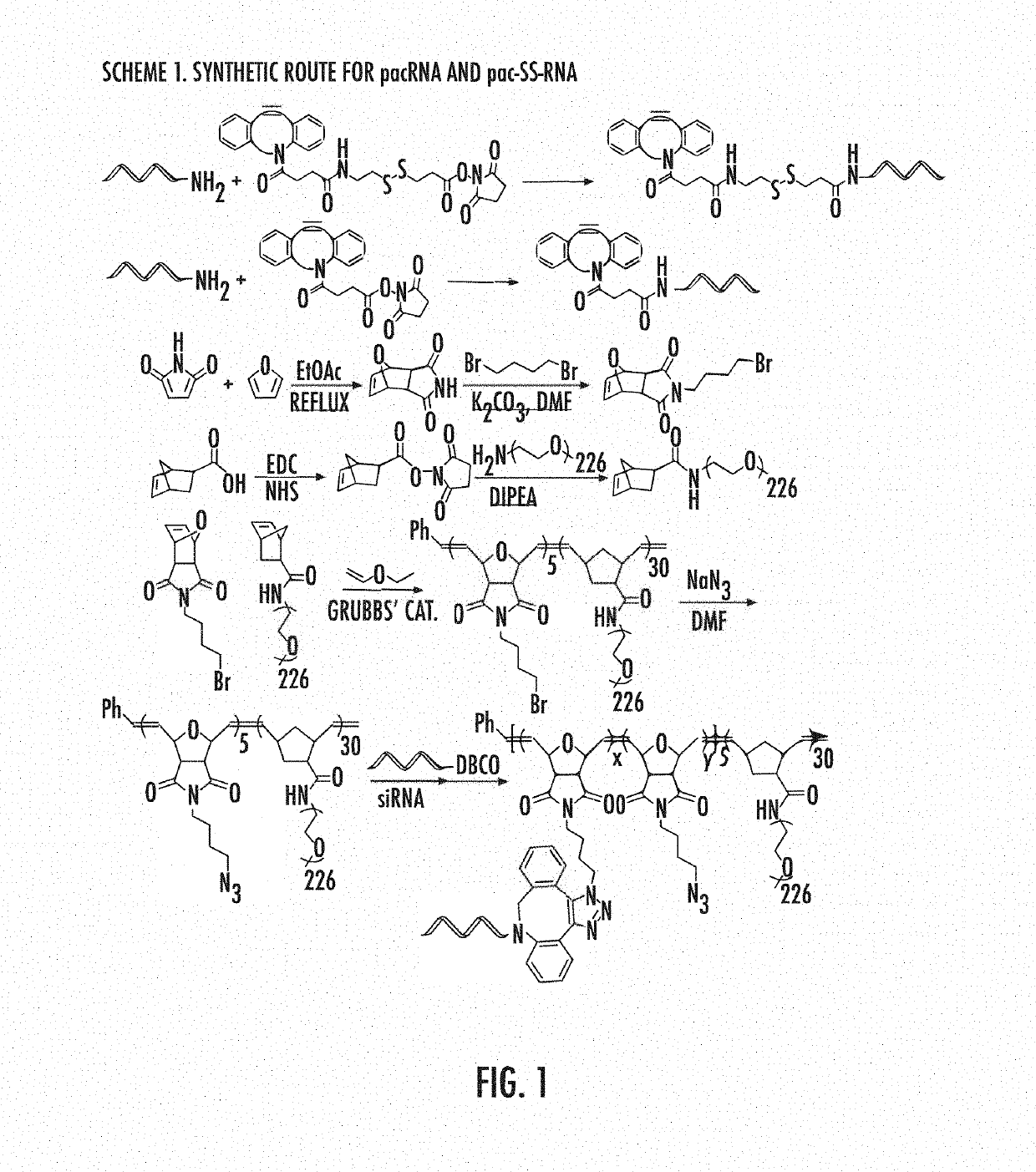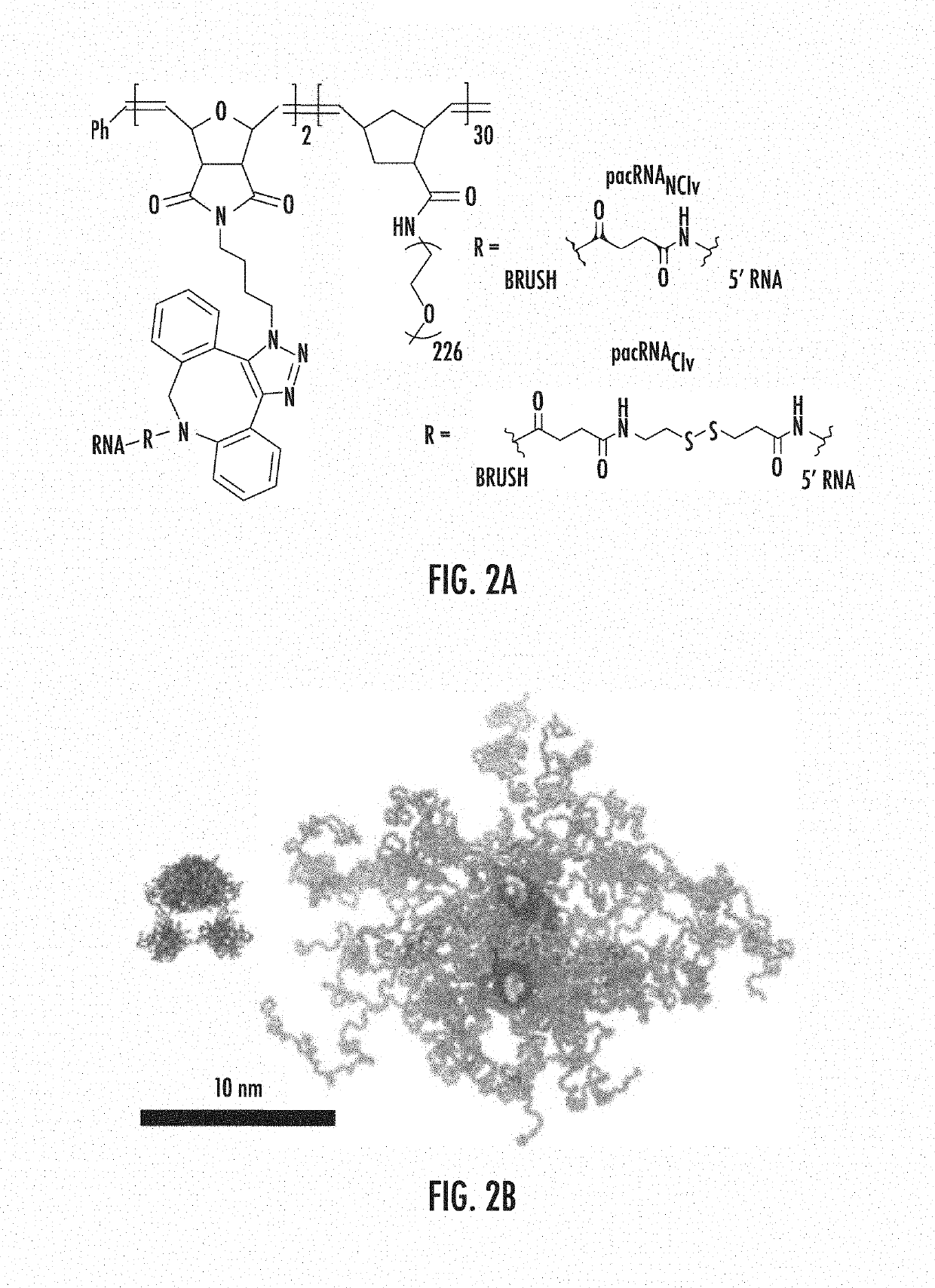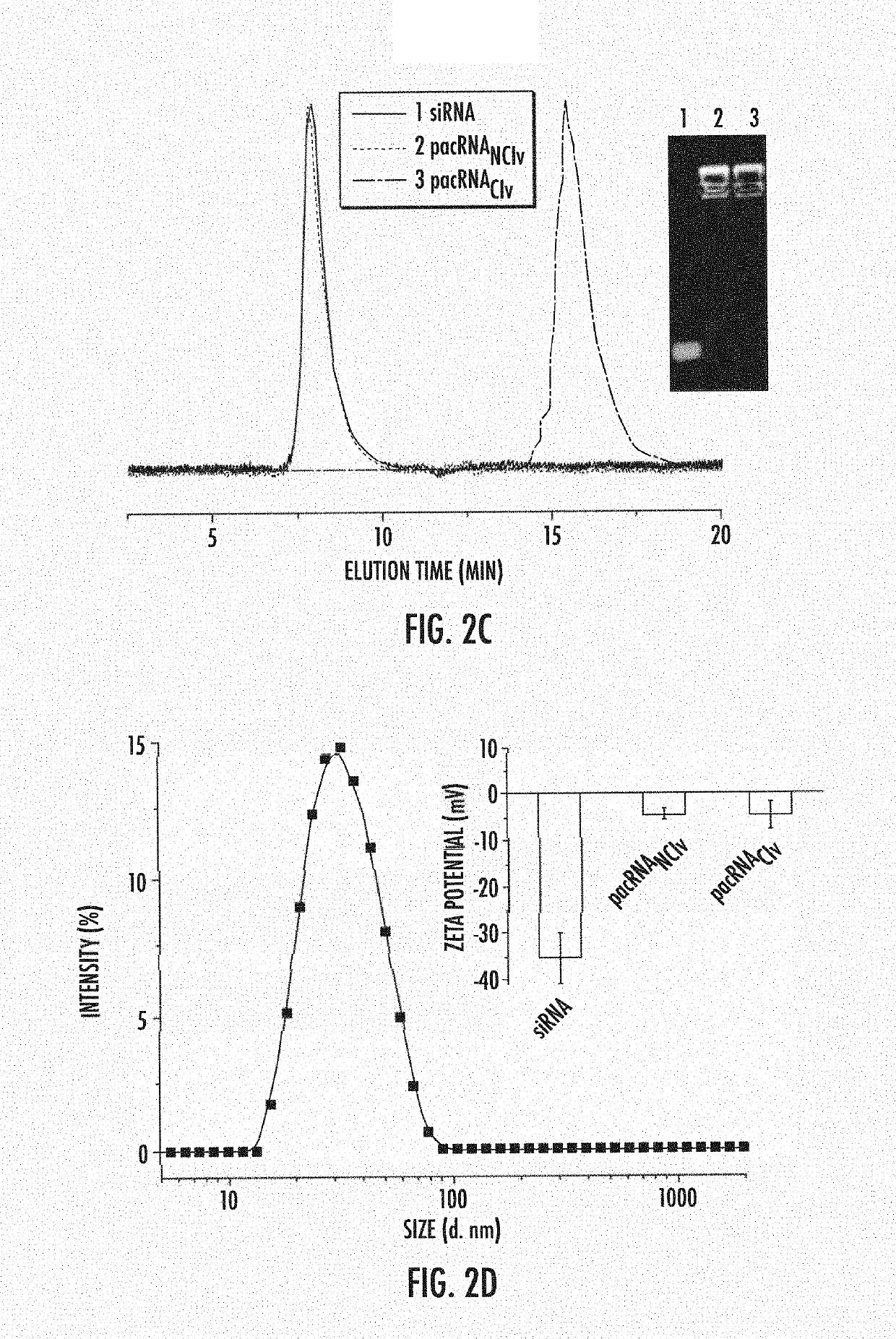Poly(ethylene glycol) brushes for efficient RNA delivery
a polyethylene glycol and rna technology, applied in the field of brush polymerrna oligonucleotide conjugates, can solve the problems of carrier-based systems not being relevant in clinical settings, short half-life for clinical use, limited clinical translation, etc., and achieve the effect of promoting the uptake of an rna oligonucleotid
- Summary
- Abstract
- Description
- Claims
- Application Information
AI Technical Summary
Benefits of technology
Problems solved by technology
Method used
Image
Examples
example 1
Synthesis and Analysis
[0057]Materials and methods: ω-Amine polyethylene glycol (PEG) methyl ether (Mn=10 kDa, PDI=1.05) was purchased from JenKem Technology USA. Dibenzocyclooctyne-S—S—N-hydroxysuccinimidyl ester (DBCO-S—S—NHS) was purchased from Sigma-Aldrich Co. Phorsphoramidites and supplies for RNA synthesis were obtained from Glen Research Co. Dulbecco's Modified Eagle Medium (DMEM) and 3-(4,5-dimethyl-thiazol-2-yl)-2,5-diphenyl tetrazolium bromide (MTT) were obtained from Sigma-Aldrich CO. Roswell Park Memorial Institute (RPMI) 1640 medium was obtained from Corning. Human SKBR3 and SKOV3 cancer cell lines were purchased from American Type Culture Collection (Rockville, Md., USA). All other materials were obtained from Fisher Scientific Inc., Sigma-Aldrich Co., or VWR International LLC. and used as received unless otherwise indicated.
[0058]Instrumentation: 1H and 13C NMR spectra were recorded on a Varian 400 MHz NMR spectrometer (Varian Inc., CA, USA). MALDI-TOF MS measurements...
example 2
pacRNA Synthesis
[0106]A pacRNA with 30 PEG10 kDa repeating units and ˜2 strands of siRNA was designed (FIGS. 2a-b). The brush polymer was synthesized via sequential ring-opening metathesis polymerization (ROMP) of 7-oxanorbornenyl bromide (ONBr) and norbornenyl PEG (NPEG), to yield a diblock architecture (pONBr5-b-pNPEG30), followed by azide substitution of the bromide (FIG. 1). The first, oligomeric block serves as a reactive region for RNA conjugation while the second, longer PEG block creates the steric congestion needed to shield the RNA. The guide strand of the siRNA was synthesized with a 5′ amine group, which was used to react with a cleavable linker (dibenzocyclooctyne-disulfide-N-hydroxysuccinimidyl ester) or a non-cleavable linker (dibenzocyclooctyne-N-hydroxysuccinimidyl ester). The resulting products were purified by reverse-phase HPLC and their structures were confirmed by MALDI-TOF MS (FIG. 1). Subsequently, the dibenzocyclooctyne-terminated guide RNA strands were coup...
example 3
Hybridization of pacRNA
[0108]Analyses of whether the pacRNAs remain capable of hybridization with a complementary (sense) sequence, and whether the elevated PEG density allows the pacRNA to resist nuclease degradation were undertaken. Hybridization and nuclease degradation are monitored by a fluorescence quenching assay, in which a quencher (dabcyl)-modified sense strand is mixed with fluorescein-labeled pacRNA containing the antisense strand. Upon hybridization, the fluorophore-quencher pair is brought to proximity, resulting in a reduction in the fluorescence signals. Degradation, on the other hand, results in the release of the fluorophore and an increase in fluorescent signal. The rates of fluorescence loss and gain are therefore indicators of the hybridization and nuclease degradation kinetics, respectively. As shown in FIG. 3b, both pacRNAs hybridized with the sense strand rapidly, with negligible difference compared with free RNA. When a scrambled sequence was added, there wa...
PUM
| Property | Measurement | Unit |
|---|---|---|
| molecular weight | aaaaa | aaaaa |
| molecular weight | aaaaa | aaaaa |
| molecular weight | aaaaa | aaaaa |
Abstract
Description
Claims
Application Information
 Login to View More
Login to View More - R&D
- Intellectual Property
- Life Sciences
- Materials
- Tech Scout
- Unparalleled Data Quality
- Higher Quality Content
- 60% Fewer Hallucinations
Browse by: Latest US Patents, China's latest patents, Technical Efficacy Thesaurus, Application Domain, Technology Topic, Popular Technical Reports.
© 2025 PatSnap. All rights reserved.Legal|Privacy policy|Modern Slavery Act Transparency Statement|Sitemap|About US| Contact US: help@patsnap.com



